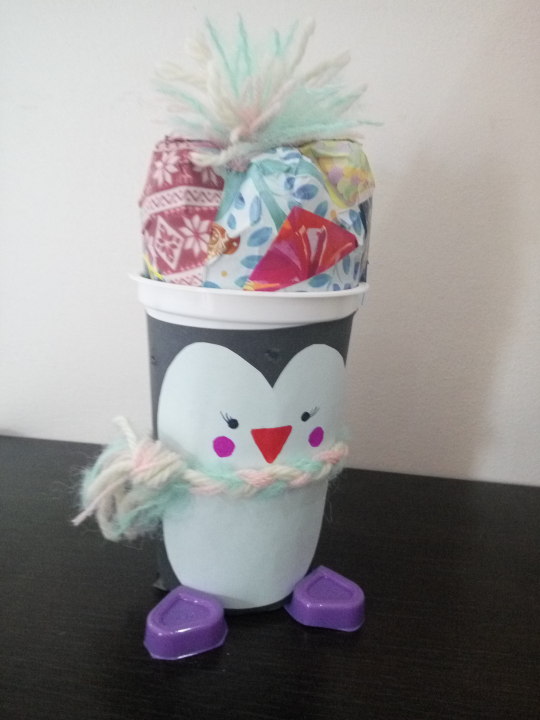Text
What is Youthpass certificate and what are its key competences? Participants of our Erasmus+ youth exchange "Recycle with Creativity 2" explained it in a very creative way!
Check it out here: https://www.facebook.com/300462710345559/posts/810683592656799/
0 notes
Video
Another nice idea for DIY glass with straw created by our participants.
0 notes
Video
Participants of Recycle with Creativity 2 went to the streets of Antalya and talked with local people about local recycling situation, what they do for recycling and possible solutions.
After making the research with local community, they created actionable plans that can be used to improve the situation on the local level.
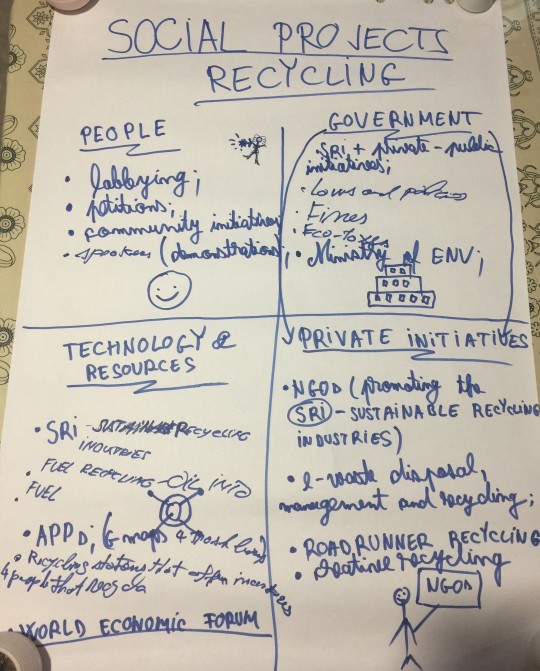
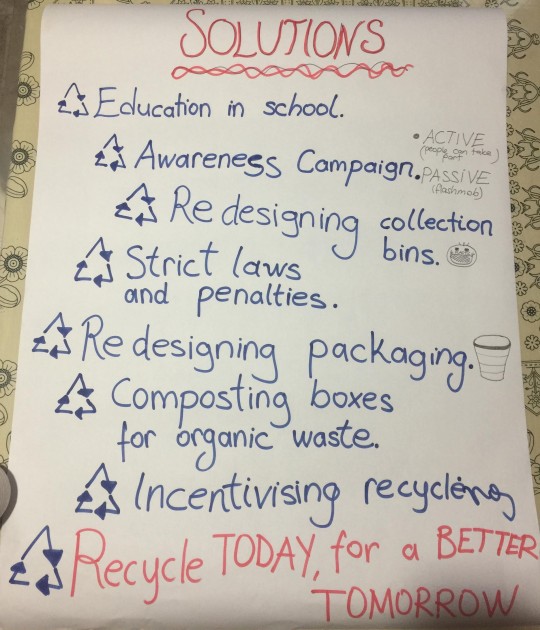
0 notes
Video
One of the creative workshops during the Erasmus+ project Recycle with Creativity 2 was dedicated to creating brand new clothes from the old ones. Our participants showed their creations during amazing fashion show!
0 notes
Video
Have you ever wanted to try to make your own recycled paper? Participants of Erasmus+ project Recycle with Creativity 2 will show you how to do it!
0 notes
Video
Tutorial: How to make a DIY Glass jars made by participants of Erasmus+ Youth Exchange "Recycle with Creativity 2".
0 notes
Text
Recycle with Creativity 2 in 6 points (Romanian team)
1. Introduction to environment and project introduction
In a rapidly evolving world, we realize that environmental approaches must not only be ethical, but also creative. The environment is the natural foundation that sustains both, the natural life and our everyday activities. Without adequate protection, the quality of people's lives in the near future will significantly deteriorate. Thus, environmental ethics combined with creative tools of preserving the environment becomes imperative for any sustainable project that will be developed by local authorities, regional communities or societies, as a whole.
Reuniting participants from five different countries (Turkey, Slovakia, Portugal, Romania and Bulgaria), Recycle with creativity 2 is a project that tries to encapsulate all the above-mentioned components. The project focuses on creative recycling, alongside social media and media promotion. The aim of the project is to encourage young people to actively contribute to environmental protection by recycling and creatively reusing old materials. The objectives of the project are the following:
· Raising awareness of environmental issues, especially waste pollution;
· Equipping young people with the creative recycling and media tools to be able to react to environmental issues in an innovative way;
· Encouraging young people to become active citizens;
· Improving participants' abilities to disseminate results and teachings in the mass media and to promote them to produce an impact;
· Promoting ERASMUS + opportunities, intercultural cooperation, and non-formal education;
· Facilitating participants to work in an intercultural environment, to discover new cultures and countries and, therefore, increase the tolerance and acceptance of diversity;
· Improve participants' ability to work in an international group and productively cooperate.
Human beings should be in an ethical relationship with the environment by doing two important things: (1) recognizing plant and animal rights and (2) realizing the intrinsic worth of nature. Not surprisingly, the conservation of natural resources and the protection of the environment are significant issues that are supported by almost every nation-state around the world and continuously pushed on the global agenda by different realist and pragmatic actors which cannot conceive the future without a proper protection and conservation of the environment.
2. GLASS
Glass recycling is a simple way to make a beneficial contribution to preserving our environment. A glass bottle that is sent to a landfill can take up to a million years to break down. By contrast, being that hard to imagine a time when glass wasn't a part of everyday life, we figure out a way to create beautiful art from it.
Modern glass made for artistic purposes! Art glass has grown in popularity in recent years with many artists becoming famous for their work; and, as a result, more colleges are offering courses in glasswork. Regardless of their common shape, people have found amazing ways to utilize glass bottles and be useful in so many ways. In the same direction, we designed our activity during this project glass workshop. The main purpose for our products was decoration but often also for utility, from glass, sometimes combined with other materials.
The technique include the use of glass bottles or jars of different shapes and colors. Therefore, we had two groups working on different stages of manufacturing our decorating bottles.
First, we used our creativity on personalizing these bottles using different materials like: watercolors, markers, brushes, color spray, rope and everything that we could find around. In this way, we had painted and sprayed bottles and gars with many color and texture combinations, different design and decorations on it.
The main products that we’ve create was vases of flowers and jars with straw. Thus, on the second stage, we’ve create for our vases many paper flowers on origami technique. For these bouquets of flowers, we learned how to cut, fold and stick the small pieces of paper.
At the end, besides the fact that we learned new techniques and we improve our crafting skills, we understand how important recycling glass it is and what the benefits are. We could preserve our environment and re-use, re-purpose and redesign to become home decorations we’ve never imagined!
3. PAPER
Paper is the most common and frequent waste released from all areas of activity. Although it is a good used daily, people are irresponsible when it comes to use and recycle. Recycling paper means turning the waste into new products and some of the reasons we do this are:
Avoiding natural imbalances, losing many natural habitats and ecosystems, destroying and threatening with extinction of many species of plants and animals by saving wood.
We use up to 65% less energy and 80% less water, than the production of virgin paper.
Paper is biodegradable. While rotting in landfills, a very powerful greenhouse gas, methane, is produced. Paper recycling helps reduce CO2 and methane emissions and helps reduce global warming.
Recycling paper reduces the amount of toxins released in air and water because it uses oxygen and not chlorine for bleaching.
In our recycling program we have developed multiple products from previously used paper that can create a beautiful decoration. We used cartons from boxes to create photo frames with different designs and colors. Each member of the team used color, markers or color sprays to create a unique and personalized pattern for his frame.
From pieces of newspaper and pieces of paper, we were able to make small flowers. We used them to decorate the frames and also to make a beautiful bouquet that fits any decor.
If we use our imagination we can make a lot of things from the paper that was already used. Even if we are taking about frames, flowers, cards or panels, our handmade work can help in saving the planet.
4. CLOTHES
The fashion industry is now being counted as one of the world’s biggest polluters. We must take into consideration not only the obvious pollutants, such as the pesticides used in cotton farming and the toxic dyes used in manufacturing, but also the huge amount of natural resources used in extraction, farming, processing, manufacturing and shipping the final product.
It takes 2700 liters of water to make one t-shirt and 10 000 liters for a pair of jeans! Synthetic, man-made fibers, while not as water-intensive, often have issues with manufacturing pollution and sustainability. And across all textiles, the manufacturing and dyeing of fabrics is chemically intensive.
Therefore, due to environmental awareness and landfill pressure, the interest in garment recycling is rapidly on the rise. By turning clothes into different garments, using them to create home decor or just by restyling and re-purposing them, you’ll never let good clothes go to waste again!
As one of the topics discussed at RWC youth exchange and probably one of our favorite workshops, garment recycling made us more aware of the endless ways of up-cycling out there and gave us a very good time: re-designing old clothes from a thrift shop and even having a fashion-show afterwards!
We have learned about the extravagant amount of pollution this messy industry comes along with and we became more aware of the fact that we can contribute to a more sustainable Planet by simply reusing, restyling and re-purposing old clothing! As other alternatives, we can exchange clothes among our friends, bring them to a consignment store in our area or simply donate them to a thrift store.
Give your old clothes a new lease of life and up-cycle!
5. ORGANIC WASTE
The topic about organic waste refers mainly to the use of this type of biodegradable material in order to create compost. Its components are of human and animal nature and that is the difference that allows the organic waste to break down easier over time than plastic or other synthetic materials.
Composting is the agricultural practice that involves organic waste and an agent that enables the return of vital nutrients back to the soil. It is documented that composting has been an agricultural practice that took place even one century before Christ. Nevertheless, the modern way of composting is based strongly on factories that have the necessary technological machinery in order to convey organic waste into compost.
During our visit in Antalya we have visited a factory where we learned that through chemical processes waste, solid and liquid can be transformed in order to be used again. The factory used organic elements found in municipal solid waste to create compost. Also, sewage waste was treated in order to become land fertilizer.
6. Cultural nights and the Erasmus+ projects
Erasmus + is the program by which the EU supports education, training, youth and sport in Europe. It has a budget of € 14.7 billion, with which more than 4 million Europeans can gain experience and access to education, training and volunteering abroad. The Erasmus + program, to be run by 2020, is not limited to students. It brings together 7 previous programs and offers opportunities for different categories of people and organizations.
After the project had ended, the participants received a Youthpass certificate and if you ask what is a Youthpass, let me give you the answer. The Youthpass certificate helps to document the development of competences, as well as to confirm participation and describe the respective project. An essential part of the initiative is attention to the planning of the learning process and reflection upon the participants' personal learning outcomes. As a strategy, it aims at fostering the recognition of non-formal learning and youth work.
The main ideas behind Youthpass are to enhance reflection on learning and competence development in youth work, receive greater recognition of youth work throughout Europe, support the employability of young people and youth workers, and promote active participation of young people. Since 2005, the SALTO Training and Cooperation RC has been in charge of the development and implementation of Youthpass, on behalf of the European Commission.
In the end, I want to mention that the cultural nights were by far the most interesting events of the project. Each of the five countries - Romania, Bulgaria, Slovakia, Portugal and Turkey - struggled to create new moments. You cannot be bored with so wonderful people who work daylight, and in the evening party a lot. I would need a few tens of pages to tell everything that happened, so I would rather cover everything in mystery: What happens in Antalya stays in Antalya.
0 notes
Video
The difference between formal, non-formal and informal education explained 👩🏻🏫📖
0 notes
Video
Raising awareness of recycling through dance! Flashmob prepared by participants of Recycle with Creativity 2 in the center of Antalya.
0 notes
Text
Recycle with Creativity: This time in Antalya!
We are happy to announce that the successful Erasmus+ youth exchange project “Recycle with Creativity” which took place in Trnava (Slovakia) in summer 2016 is having a second edition! This summer, 33 participants from 5 partner countries (Slovakia, Turkey, Portugal, Romania, Bulgaria) will participate in the project “Recycle with Creativity 2″, which will take place in Antalya (Turkey).
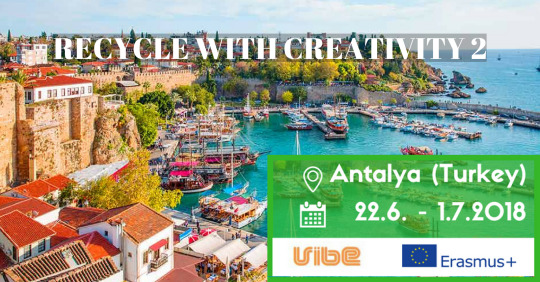
The place of the project is not the only new thing. This time, we will be exploring new materials for recycling and you can look forward to new photo and video tutorials, from which you can take inspiration and create new objects from wasted material!
Stay tuned and follow new content of Recycle with Creativity 2!
0 notes
Photo
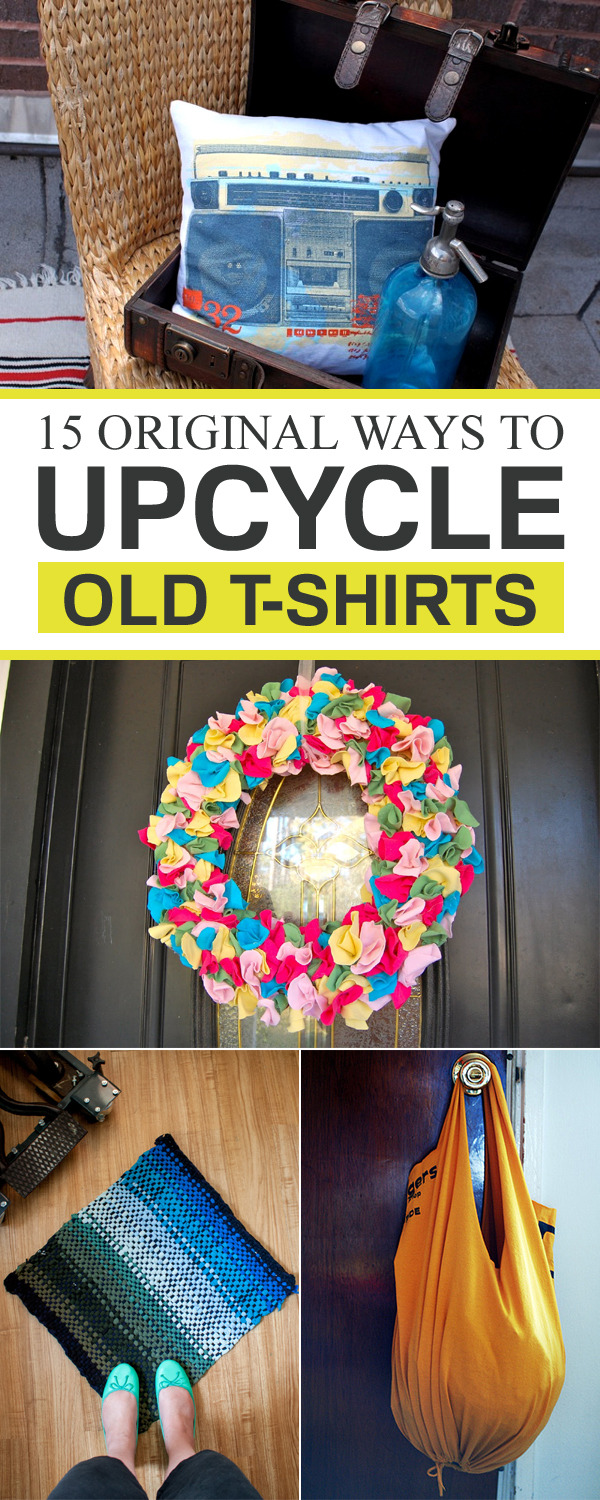
15 Original Ways to Upcycle Old T-Shirts →
211 notes
·
View notes
Photo
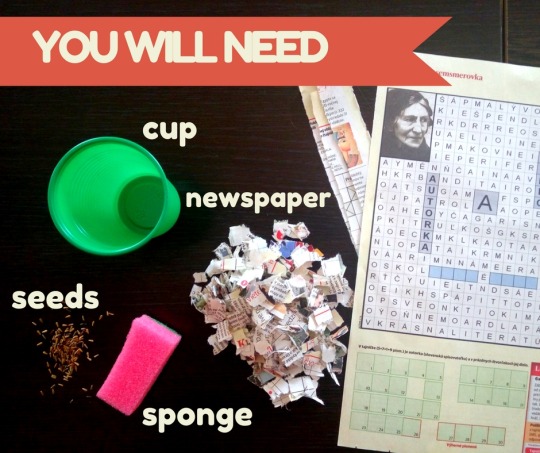
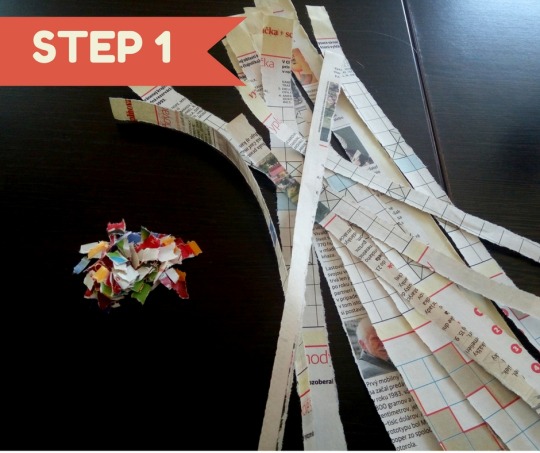

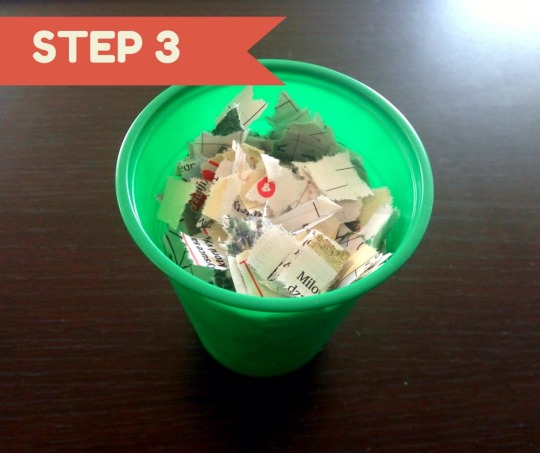



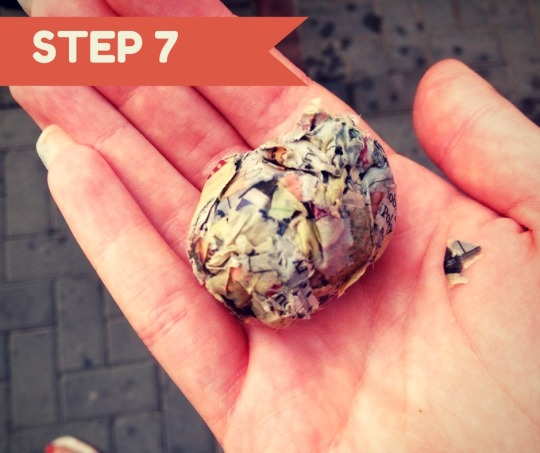
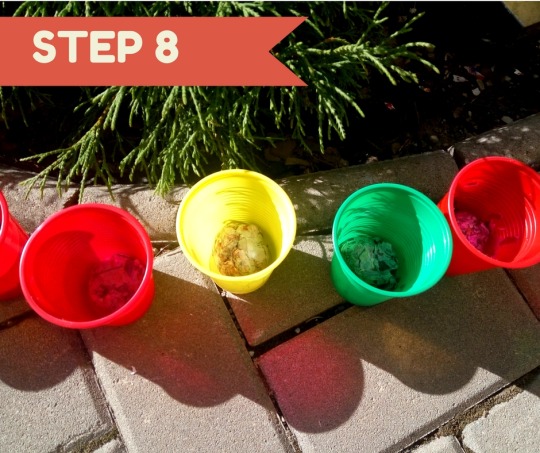
SEED BOMB tutorial
0 notes
Video
vimeo
Another video tutorial made by Erasmus+ Youth Exchange participants of “Recycle with Creativity” project. Now the topic is... HOW TO MAKE A SPEAKER”!
0 notes
Video
vimeo
Video tutorial made by participants of Erasmus+ project "Recycle with Creativity" :) Great job!
0 notes
Photo
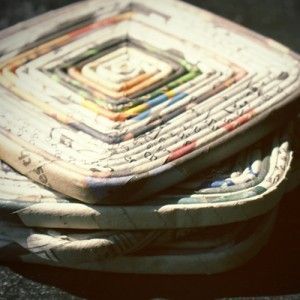
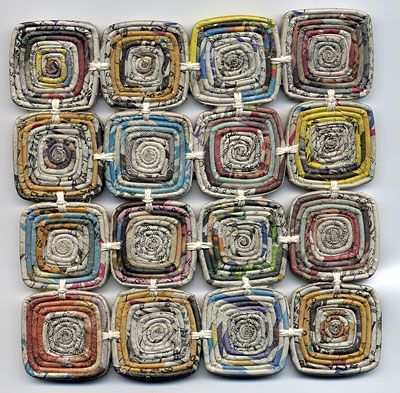


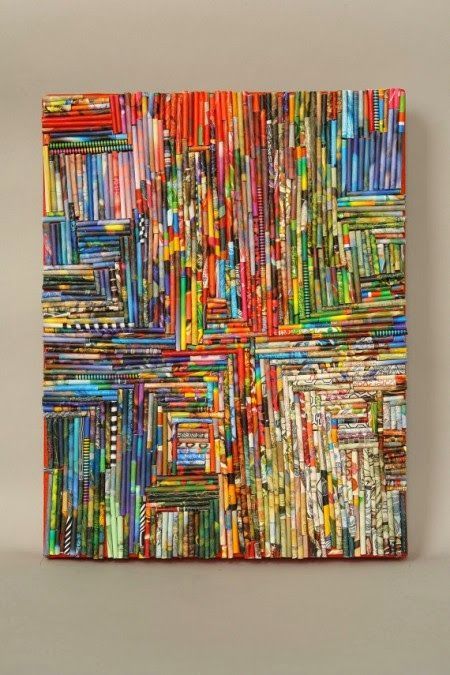


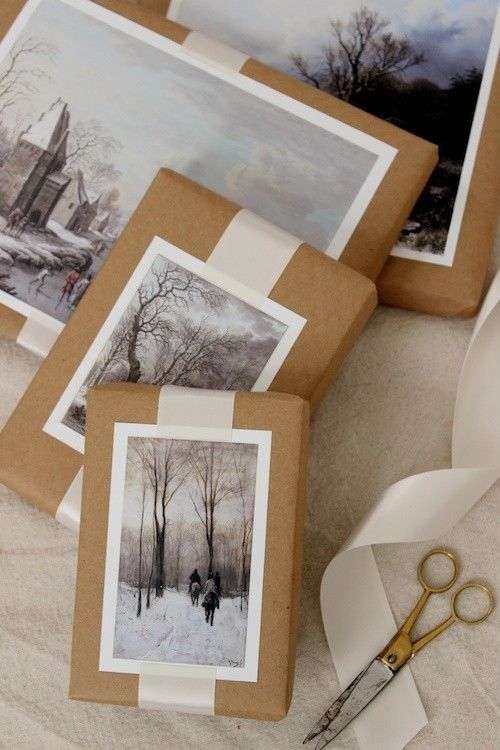
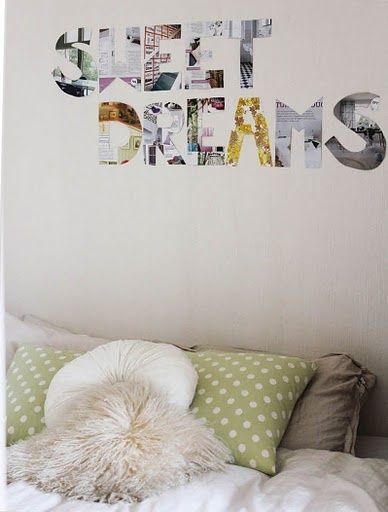

Paper - creative recycling ideas
6 notes
·
View notes
